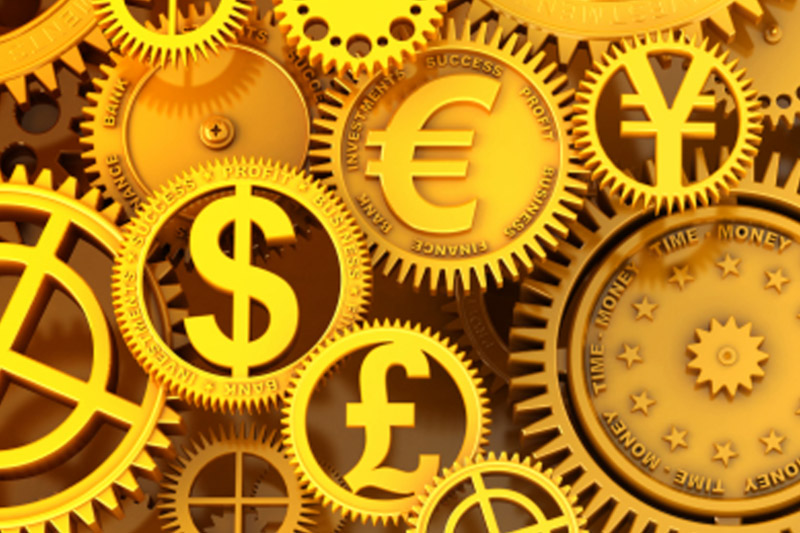Investing.com - The dollar rose to a six-month high against the yen on Monday, as a deal to limit Iran’s nuclear activities boosted global equities markets and curbed safe haven demand for the yen.
During U.S. morning trade, USD/JPY advanced 0.49% to 101.75, the highest since May 29, from 101.25 on Friday.
Market sentiment was boosted after Iran agreed to limit its nuclear program in exchange for sanctions relief, as part of an agreement with the U.S. and five other world powers.
The yen remained under heavy selling pressure amid heightened expectations that Bank of Japan will implement additional easing measures next year.
Speaking Monday, BoJ Governor Haruhiko Kuroda reiterated that the bank will continue with its massive stimulus program and said the bank was prepared to take further steps if necessary in order to meet its 2% inflation target.
Demand for the dollar continued to be underpinned by expectations that the Federal Reserve could start tapering its stimulus program at one of its next few meetings.
Elsewhere, the euro was lower with EUR/USD down 0.36% to 1.3506 from 1.3557 on Friday.
The euro came under pressure after European Central Bank governing council member Ardo Hansson said the bank is ready to make further cuts to interest rates and is “technically ready” for negative deposit rates.
The pound was also lower against the stronger dollar, with GBP/USD falling 0.41% to 1.6155.
The dollar extended gains against the Swiss franc, with USD/CHF rising 0.51% to 0.9116.
The greenback was mixed to higher against the Australian, New Zealand and Canadian dollars, with AUD/USD slipping 0.19% to 0.9152, NZD/USD climbing 0.17% to trade at 0.8199 and USD/CAD rising 0.39% to 1.0558.
The Australian dollar remained close to 11-week lows after Reserve Bank Governor Glenn Stevens said last week the bank believed that intervening in the currency market to lower the Aussie’s value could be effective in the right circumstances.
The U.S. dollar index, which tracks the performance of the greenback versus a basket of six other major currencies, was up 0.37% to 80.99.
The dollar shrugged off a report showing that U.S. pending home sales fell unexpectedly in October.
The National Association of Realtors said its pending home sales index declined by a seasonally adjusted 0.6% last month, disappointing expectations for a 1.3% gain.
During U.S. morning trade, USD/JPY advanced 0.49% to 101.75, the highest since May 29, from 101.25 on Friday.
Market sentiment was boosted after Iran agreed to limit its nuclear program in exchange for sanctions relief, as part of an agreement with the U.S. and five other world powers.
The yen remained under heavy selling pressure amid heightened expectations that Bank of Japan will implement additional easing measures next year.
Speaking Monday, BoJ Governor Haruhiko Kuroda reiterated that the bank will continue with its massive stimulus program and said the bank was prepared to take further steps if necessary in order to meet its 2% inflation target.
Demand for the dollar continued to be underpinned by expectations that the Federal Reserve could start tapering its stimulus program at one of its next few meetings.
Elsewhere, the euro was lower with EUR/USD down 0.36% to 1.3506 from 1.3557 on Friday.
The euro came under pressure after European Central Bank governing council member Ardo Hansson said the bank is ready to make further cuts to interest rates and is “technically ready” for negative deposit rates.
The pound was also lower against the stronger dollar, with GBP/USD falling 0.41% to 1.6155.
The dollar extended gains against the Swiss franc, with USD/CHF rising 0.51% to 0.9116.
The greenback was mixed to higher against the Australian, New Zealand and Canadian dollars, with AUD/USD slipping 0.19% to 0.9152, NZD/USD climbing 0.17% to trade at 0.8199 and USD/CAD rising 0.39% to 1.0558.
The Australian dollar remained close to 11-week lows after Reserve Bank Governor Glenn Stevens said last week the bank believed that intervening in the currency market to lower the Aussie’s value could be effective in the right circumstances.
The U.S. dollar index, which tracks the performance of the greenback versus a basket of six other major currencies, was up 0.37% to 80.99.
The dollar shrugged off a report showing that U.S. pending home sales fell unexpectedly in October.
The National Association of Realtors said its pending home sales index declined by a seasonally adjusted 0.6% last month, disappointing expectations for a 1.3% gain.
